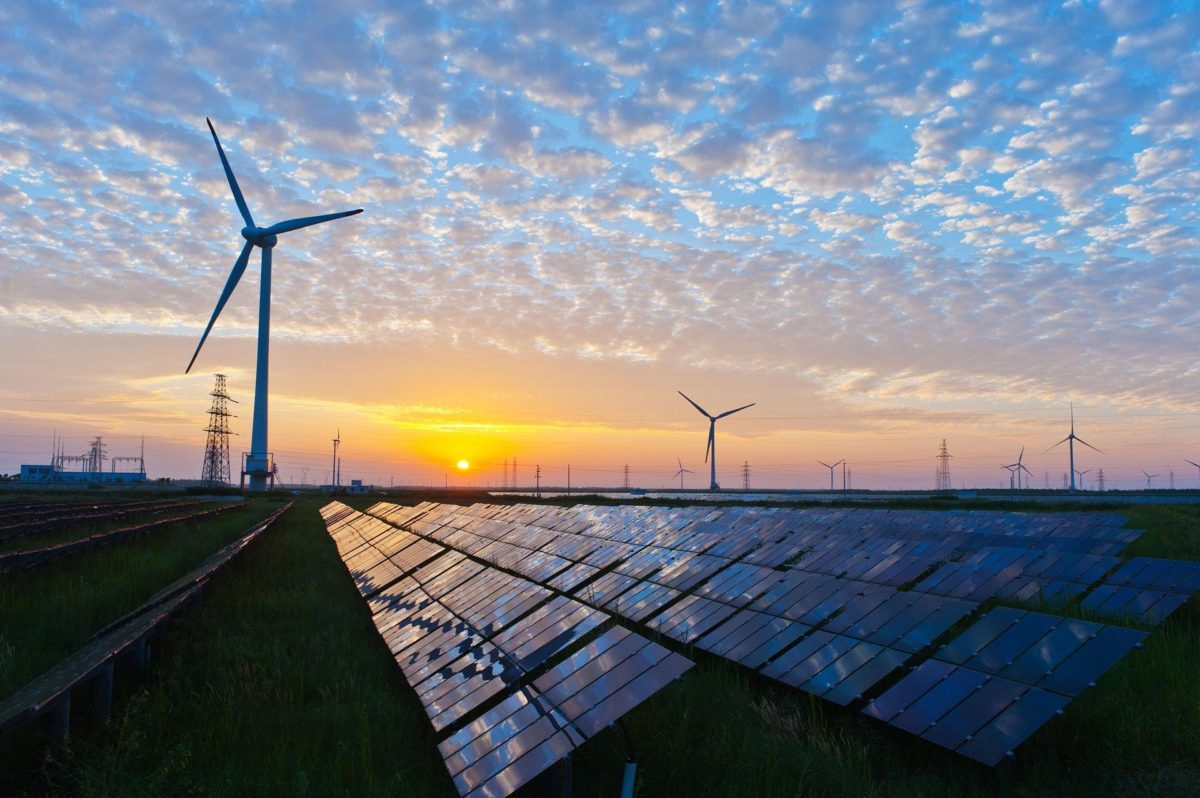The coming surge in battery storage deployment is further eroding the economics of coal and natural gas generation and accelerating fossil fuel plant retirements, the Institute for Energy Economic and Financial Analysis (IEEFA) said in its 2021 US Power Sector Outlook.
Technology improvements and the resulting price declines already have rendered solar and wind generation resources the least-cost option in much of the U.S. During the next two to three years the accelerating shift will be transformative, the IEEFA said.
Solar plus storage is currently economically competitive, and costs are almost certain to decline.
“Hitting both the [DoE’s] solar and the long duration storage cost goals would be a game changer,” the report said.

Department of Energy/Quentin Kruger
To pull down storage costs, the Department of Energy (DOE) in December launched a storage challenge that set a goal of reaching a levelized cost of storage for long-duration stationary applications of $0.05/kWh by 2030. Using DOE’s own estimates, the report said this would represent a 90% cost reduction.
In February, the DOE added to that goal, setting its sights on pushing PV costs down to $0.03/kWh by 2025 and $0.02/kWh by 2030.
“Last year was definitely a breakout year for battery storage… but it’s just a harbinger of things to come,” said Dennis Wamstead, the IEEFA analyst who co-authored the 2021 outlook.
About 20,000 MW of new battery storage will probably be installed at utility installations around the country in the next four years. Battery storage passed the 1 GW marker for installed capacity last year.
According to the IEEFA’s report, coal’s days are numbered. “Even being among the best operating coal-fired generators doesn’t guarantee that a unit is financially viable or is the lowest-cost option for consumers,” it said.
On the natural gas side, the IEEFA said it expects project financing to become increasingly difficult to secure due to climate change concerns, a more progressive administration in the White House, and lingering overcapacity. The possibly that the Federal Energy Regulatory Commission will re-examine its current hands-off approach to approving new interstate gas pipelines also presents a threat to future gas generation proposals, it said.
Party’s over?
In short, the rise in gas generation that occurred in the 2010s is pretty much over.
“Part of that is being driven by the rush to wind and solar, and part of that is being driven by the fact that there is an increasing emphasis on the environmental impacts of gas,” Wamstead said.
He said “it’s entirely possible” that by the end of 2022 wind and solar by themselves will have caught up with coal. He said that by the end of this year, wind, solar, and hydro generation may well exceed coal’s contribution to the U.S. electricity market.
If the Biden administration pursues a 2035 carbon-neutral electricity grid with any success, “obviously that will change a lot of these forecasts,” he said.
For example, creating an investment tax credit (ITC) for energy storage or a technology-neutral tax credit that would apply equally across all forms of generation, and storage that lowers greenhouse gas emissions could also accelerate change. So, too, could the passage of several other bills in Congress, including one measure to incentivize domestic manufacturing of advanced energy technologies and another to create a transmission tax credit.
This content is protected by copyright and may not be reused. If you want to cooperate with us and would like to reuse some of our content, please contact: editors@pv-magazine.com.








I just read stuff from EIA Short-Term Outlook like “the forecast share of generation from coal to rise from 20% in 2020 to 22% this year, and to 23% next year” and laugh. I understand that since the U.S. is getting back to normal and electric demand/generation will be up this year. And that not enough solar and wind were installed last year to make up that increased demand/generation. So, it is understandable that coal will get increased use this year although I doubt it will be to 22%. But it is laughable to think that coal will increase to 23% next year. I guess if NG prices continue to rise but I’m not sure that will be true. Anyway, it is good that solar+wind are eating into the grid generation.
Exactly like the article states, the battery storage industry value has increased quite a lot. More people are realizing how valuable solar + battery are together especially on homes. Not only is the electricity bill dropping, but people are able to stay powered during blackouts.
As long as the technology improvements in the alternative energy industry continue, we should be able to see more pros in the solar and energy sector.
Please stop saying that renewables are the least cost in most areas. Solar and other renewables have been the least cost option EVERYWHERE in the USA for almost a decade IF you use the correct LCOE in your calculations. ALmost all LCOE’s assume a level capacity for the life of a coal or other plant – for example in the UK a 20-year coal plant had an LCOE based upon an 87% capacity rate – over the first ten years the rate dropped to less than 10% as solar, etc started to take market share – however, the capacity rate for the future 10 years will OBVIOUSLY be less than 10% and maybe a low as ZERO (stranded) but the LCOE will still be based upon 87%. This is a MASSIVE worldwide math error or “other on purpose” misdirection.
When the Sun Sets, solar gets ZERO output. When the wind does not blow, wind gets ZERO output, When Coal miners Strike and there is no coal for power plants, coal gets Zero output. When natural Gas is no longer available, you get ZERO output from a natural Gas Fired power plant. Hydro-electric, Geo Thermal and Nuclear are the only long term dependable solutions for clean energy that don’t stop producing daily and must be used in conjunction with the other clean energy sources.
Hi Edward,
You are correct about various sources NOT having 100% reliability BUT that is ALL sources. Hydro is subject to droughts (as we are seeing now), Geo and Nukes both have significant periods of unplanned outages. Note that Solar+Storage does NOT suffer the diurnal cycle.